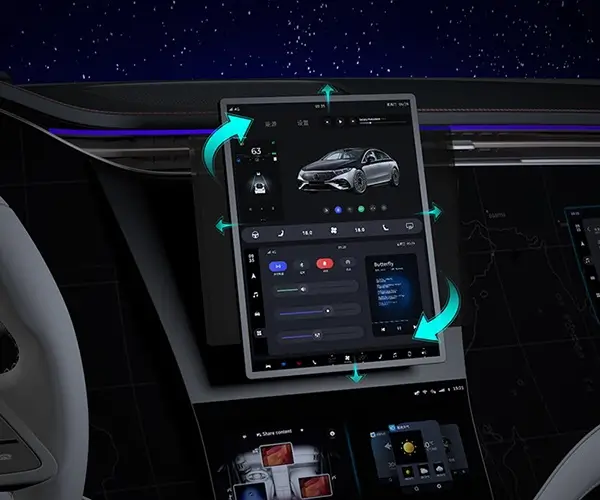Unveiling the Power Behind Precision: Exploring What Are Servo Motors
Imagine a world where machines move with pinpoint accuracy, where robotic arms assemble delicate electronics, and where autonomous vehicles navigate complex environments — all in perfect harmony. At the heart of these technological marvels lies a component often hidden from the naked eye but vital to their operation: the servo motor.

What is a Servo Motor?
Simply put, a servo motor is a specialized rotary actuator used for precise control of angular position. Unlike common motors that spin endlessly or are simply controlled by their voltage or speed, servo motors are designed to precisely rotate to a specific angle, hold that position, and respond quickly to changes. This makes them indispensable in applications requiring accuracy and responsiveness.
Picture a tiny robotic arm reaching out to pick up a fragile object, or a drone adjusting its camera angle smoothly during flight. These operations are made possible by the intricate work of servo motors. They serve as the "muscle" behind many automated systems, transforming electrical signals into finely tuned mechanical movements.
How Do Servo Motors Work?
At their core, servo motors operate based on a feedback control system, usually a Proportional-Integral-Derivative (PID) controller that continuously adjusts the motor's position based on the input signal. Here's how it unfolds in simple terms:
Input Signal: A control signal, often a PWM (Pulse Width Modulation) signal, indicates the desired position of the servo. Think of this as the 'goal' position.
Sensor Feedback: Inside the servo, a potentiometer or optical encoder constantly measures the actual position of the motor's shaft.
Comparison and Adjustment: The control circuit compares the current position to the target and adjusts power sent to the motor accordingly, making micro-adjustments until the desired position is achieved.
Holding the Position: Once aligned, the servo motor maintains its position and responds quickly to any external forces or further commands.
This closed-loop control system gives servo motors their remarkable ability to execute accurate, repeatable movements.
Types of Servo Motors
There are several types of servo motors, each suited to different applications:
DC Servo Motors: These are the most common, powered by direct current (DC). They are simple, economical, and effective for many tasks. They usually incorporate a feedback device like a potentiometer to facilitate precise control.
AC Servo Motors: Powered by alternating current (AC), these motors tend to be more robust and suitable for industrial applications requiring high power, such as CNC machinery and robotics.
Brushless DC (BLDC) Servo Motors: These are more efficient and have a longer lifespan because they eliminate brushes. They are rapidly becoming popular in high-performance robotics and aerospace.
Linear Servo Motors: Instead of rotational, these produce linear movement, and are often used in precise positioning systems such as semiconductor manufacturing or high-speed sorting.
Why Are Servo Motors Important?
Servo motors are the backbone of many modern innovations. Their ability to provide precise, controlled motion makes them critical in robotics, industrial automation, aerospace, medical equipment, and even entertainment systems like camera stabilizers.
Think about a robotic surgical assistant performing delicate procedures, or a camera drone capturing breathtaking footage — servo motors make these feats possible. Their responsiveness and accuracy can dramatically improve efficiency, safety, and product quality across various industries.
Key Features of Servo Motors
High Precision: As they are equipped with feedback devices, they can achieve very fine control over position, speed, and torque.
Fast Response: Their closed-loop feedback enables quick adjustments, making them suitable for responsive applications.
Good Repeatability: Servo motors can reliably reproduce specific movements over many cycles.
High Torque at Low Speeds: Unlike simpler motors, they can produce substantial torque even at slow speeds, vital for applications like robotic joints.
Common Components of a Servo System
A typical servo system includes:
Motor: The main actuator, converting electrical energy into mechanical motion.
Feedback Device: Usually a potentiometer, encoder, or resolver that supplies real-time position data.
Controller: The electronic brain that interprets input signals and adjusts motor power accordingly.
Power Supply: Provides the necessary electrical current.
Applications of Servo Motors
Servo motors are ubiquitous, powering a vast array of applications:
Robotics: From industrial arms to humanoid robots, precision movement is key.
Aerospace: Flight control surfaces and autopilot systems rely on servo motors for stability.
Automotive: Power steering and automated parking systems utilize servo technology.
Manufacturing: CNC machines, 3D printers, and conveyor systems depend on accurate motion control.
Consumer Electronics: Camera autofocus and drone gimbals use small, high-precision servo motors.
Looking Ahead
As technology advances, the role of servo motors continues to expand. Innovations in materials, control algorithms, and miniaturization are enabling even greater precision and efficiency. For instance, servo motors integrated with IoT (Internet of Things) technology allow real-time monitoring and predictive maintenance.
Understanding what a servo motor is and how it operates unlocks a deeper appreciation of modern automation's sophistication. Whether in high-stakes aerospace applications or everyday devices, these miniature powerhouses keep our world spinning with grace and precision.
Leveraging innovations in modular drive technology, Kpower integrates high-performance motors, precision reducers, and multi-protocol control systems to provide efficient and customized smart drive system solutions.




































